Winter crops in the fall. Winter crops
Gradually I take my head (and a hoe with a shovel) and put my site in order, leaving the groundwork for the next season. I talked a lot about growing crops without deep digging the land, so yesterday I devoted half a day to such a no-till preparation of the beds on next year... As I said, it is not enough just to leave the garden for the winter in such a state as it is after harvesting. It is necessary to return to the earth at least those nutrients that the grown vegetables took from it.
Everyone knows that garden compost (rotted and rotted plant residues with soil) is very useful for plants. But it is harvested for the most part in a specially designated compost heap, and in general this process turns out to be long and tedious. Kurdyumov, on the other hand, suggests (in general, probably not he, but since he is a popularizer, we will write this idea down to him) to plow plant residues into the ground, right on the garden bed. Next week I will prepare at least one bed in this way, but here I would like to talk about one of the components - green manure (siderates). Siderates are simply plants that are grown specifically to fertilize the earth with them. For comparison, a kilogram of green manure (mustard greens, for example) in terms of the amount of useful minerals is approximately equal to three kilograms of manure.
Also, for sure, everyone has heard about what must be observed on their site so that the land is not depleted from the same type of plants. So, the cultivation of winter green manures is an excellent way out of the situation, which can kill two birds with one stone - observe the crop rotation and increase the fertility of the soil by embedding the grown vegetation in it.
It turns out that green manures can be grown not only throughout the season, having allocated for them some kind of separate too "tired" garden bed, but also alternately with the main harvest. We dug up potatoes - immediately sow the field with winter mustard - and there will be less weeds, and the benefits of the soil are enormous, and next year you can plant potatoes again.
Gallery: winter green manure (25 photos)


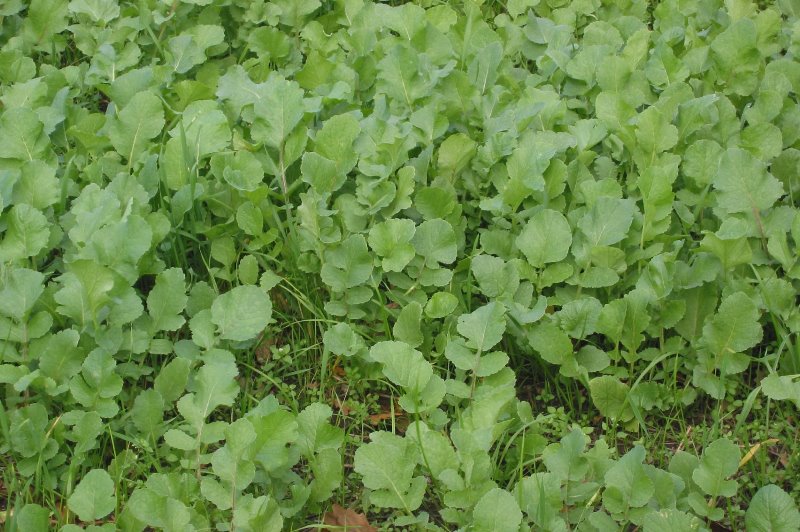
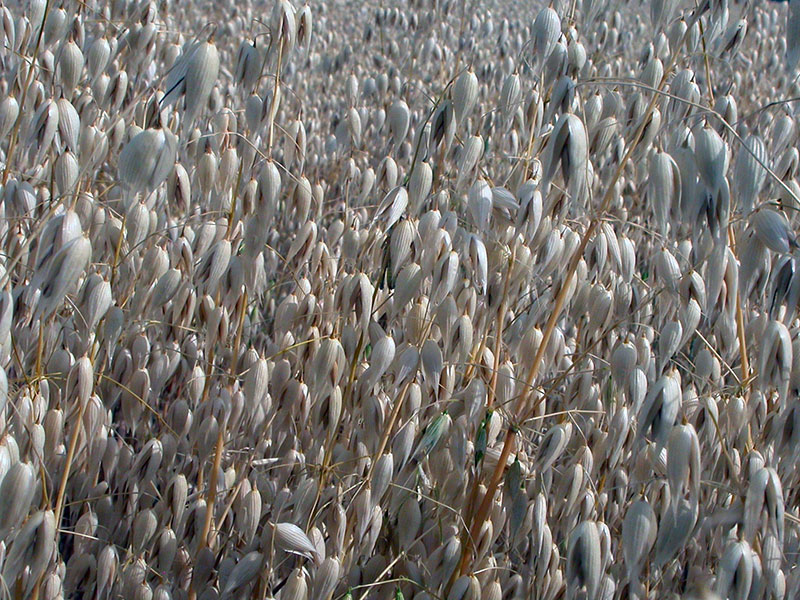



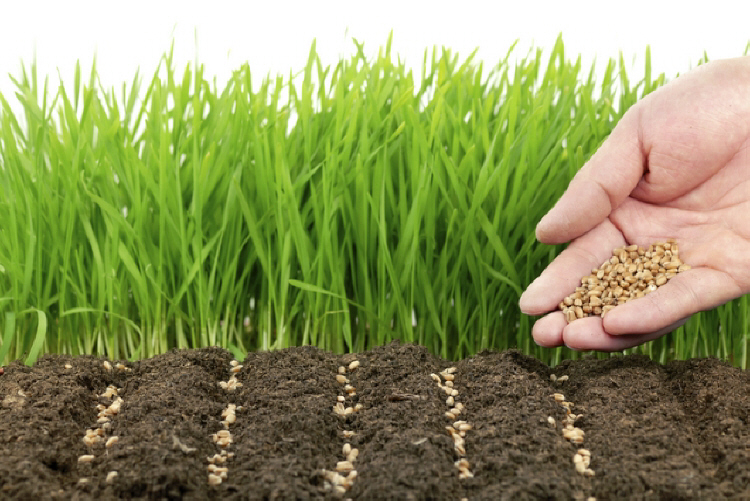
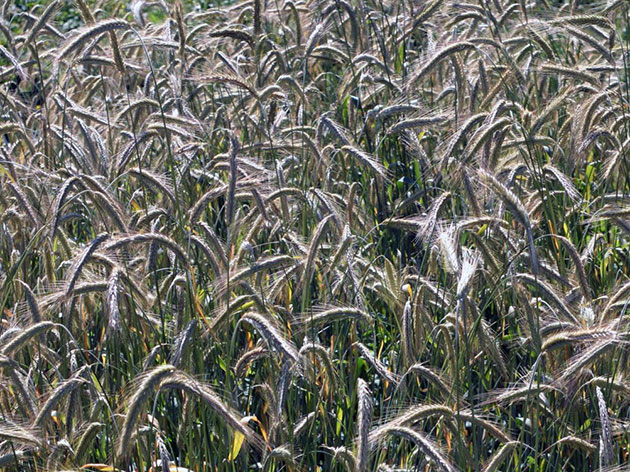
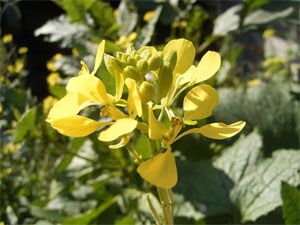




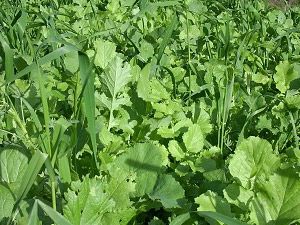


![]()

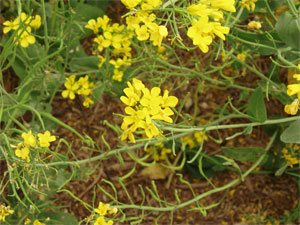


There are a lot of advantages of such constant soil use:
- Under permanent vegetation cover, the soil does not erode;
- Decreases mineralization of organic matter;
- Nutrients are not washed out into the soil;
- Plant roots make the soil loose if, after harvesting, you do not dig up the ground and pull out the plants from the roots;
- The dense green cover also serves as a mulch - it inhibits the growth of weeds and prevents direct sunlight from falling on the ground;
- Legumes contain colonies of nitrogen-fixing bacteria on their roots, which enrich the soil with nitrogen.
It remains to decide on a specific type of green manure, which will need to be sown in a specific season. Many recommend alternating types of green manure, but also take into account what exactly has grown before and will grow in this garden. For example, cereals (rye, oats, etc.) are said to increase wireworm populations, so it is better to sow mustard or the like in potato fields. I will give a small list of plants that can be attributed to siderates:
- Legumes (peas, chickpeas, beans, beans, soybeans, lentils);
- Annual herbs (lupine, vetch, clover, sainfoin, sachet, alfalfa, clover);
- Fenugreek, sweet clover, rank, saradella sowing, buckwheat, phacelia, white mustard, olive radish, rapeseed, sowing rye.
Now is the time to sow fertilizers that will delight the eye with their greenery until it snows. For this, the following are best suited types of winter green manure: horse beans, white sweet clover, seed rye and white mustard. These crops are cold-resistant, able to withstand even slight frosts, depending on the variety. It will be better if you find special winter varieties of rye and mustard, but in some cities it is not so easy. I just went to the bazaar and bought two liters of rye there for 20 rubles for my tomato beds and three bags of mustard for a plot that was once under raspberries.
How to plant siderates
There are no difficulties here - we loosen the soil with a cultivator, if it is solid; we make rows with a hoe; pour with water; sow; we fall asleep the rows; water again, but more carefully, without washing off the seeds; cover the planting with a layer of organic mulch.
If the areas are large, but you can just scatter the seeds "in the wind". In principle, with autumn sowing, you can sometimes do without watering, but because we have not had a good rain for three months already, I would not hope that it will be tomorrow. I already miscalculated so this year with carrots.
Recently I saw from someone that reeds can be used perfectly as mulch, and immediately went to the river for the reeds. It should be noted that cutting it with kitchen scissors is a thankless task, next time I'll take at least a hoe ... But the cover turns out to be beautiful and there are few weed seeds from it - on dry soil it has little hope of growth.
How to use the land after green manure
The use of land after green fertilization has its own characteristics. First of all, this concerns the issue of digging the earth. If you stick with it, you don't need to dig at all. By the way, many Internet sources say the same thing about siderates - in no case do you dig. And most gardeners who adhere to ordinary green traditions say that green organics need to be buried deep in the ground. Whom to believe is up to you, but the best in my opinion (as a result of information collected from various sources) will be to dig greens into the ground to a shallow depth (5-7 cm) or just sprinkle it with earth a little.
They also say that in the spring it is good to plant seedlings right in the middle of growing green manure - at first, low greenery will protect the plants from temperature extremes and sunburn... But too dense vegetation can harm the growth of young seedlings.
I personally (if everything works out and in the spring the eye will be pleased with the early shoots of rye, which did not sprout this fall), and I will plant on clean soil mixed with organic matter.
That's all for today, I tried to provide as much information as possible about green manure that an amateur gardener may need :).
UPD: sometimes you can learn more from blog readers than from many sources that came across when reading the Internet. For example, Vera Alekseevna(unfortunately, I don't know the last name) left a very valuable remark:
On poor sandy soil, an annual lupine is needed.
Wheat is a wonderful green manure. Its powerful roots structure well dense soil. But remember that all grains are the wireworm's favorite food. Therefore, one type of green manure cannot be sown, always use a mixture, and the more in composition, the better. Notice how Mother Nature is doing.
Rye actually inhibits nematodes. And not only them, but also weeds growing nearby, therefore it is one of the strongest phytosanitary. It also oppresses cultivated plants that have fallen to grow nearby - rye is a highly allelopathic plant. This must be taken into account when placing garden crops... Before planting them, rye is cut for 1.5-2 weeks so that the plant hormones of rye are dissolved by soil bacteria. Then plant any crops.
There is no point in just scattering seeds over the soil surface - you are feeding birds and mice.
The effect of planting siderates is always there, even if you planted them late. This is not a field, but the territory of a small suburban area... Siderata act not only by the fact that after them minerals remain on the surface of the earth. They also act as a root system, which secretes the so-called COLINS, hormones of plant growth and development. It is they who oppress, for example, a wireworm, if we take as an example White mustard... But many herbs have the same effect. The person just doesn't want to watch.
Regarding the fact that birds can peck seeds: sparrows remarkably pull out swollen and sprouted pea seeds from the soil - hunger makes them smart. Therefore, seeds should not be scattered on the ground.
About alfalfa. Wonderful green manure culture. Just remember that this is a perennial. It belongs to legumes, which means it enriches the soil with organic nitrogen, after which everything grows well.
the last thing I would like to write about is plowing green manure or digging the ground after applying green manure is the stupidest thing to do. Why are you planting green manure, spending money on them, free time, your work and health? Their goal is to restore the structure of the soil, i.e. return the soil to natural standards of looseness and ability to breathe, absorb and give moisture to plants. This can only be in structural soil, i.e. POROUS, which is what the roots of green manure do, and in nature the roots of "wild", may they forgive me for this name, plants. Launching a walk-behind tractor or a plow (they are no longer produced anywhere in the world, and Russia is again "ahead of the rest of the planet"), you ruin this porosity of the soil. Siderata are embedded in the top layer of the earth no deeper than 10 cm, otherwise the processes of peat formation will begin there are no aerobic bacteria that process the organic matter that nature gives annually
Read more smart books, not just online articles that are not always correct.
Rye - cereal, on personal plot it is often planted as an intermediate. Why is this done? In fact, rye is an excellent prevention of all kinds of diseases and pests of vegetable crops, in addition, it does not allow weeds to penetrate the site, and neither annual nor perennial.
Winter rye, sprouted in early spring and accumulated good green mass, by May it can already be embedded in the soil in quality. In such a land, potatoes, tomatoes, pumpkins and zucchini grow well.
When to sow winter rye in the country?
Inexperienced gardeners, who have never done anything like that before, quite naturally the question arises - when is it necessary to sow winter rye? After all, this orderly and green fertilizer is important to grow properly.
So, best time for sowing winter rye, it is the end of August - the beginning of September. It is necessary to sow in rows, with an inter-row distance of 15 cm. The seeds are embedded in the soil at a shallow depth. The seeding rate is 2 kg per one hundred square meters of land.
All work after sowing winter rye is left until next spring. But in the spring the time comes to "force" rye to grow actively. To do this, the bed is harrowed with a rake, the aisles are loosened with a small flat cutter. All this provokes the plant to intensively build up green mass.
After that, you need to leave the rye alone, it will grow completely independently for 3-4 weeks. Then it is cut off and embedded in the soil. You can put the tops in a compost pit, but you do not need to touch the roots of the plant, otherwise the whole meaning of the green manure will be lost. After 1-2 weeks, you can plant the main vegetable crop.
Is it possible to sow winter rye in October?
It is not for nothing that the time when it is possible and necessary to sow winter rye falls at the end of summer - the beginning of autumn. During the period that remained before the onset of frost, rye will have time to hatch, 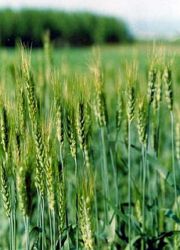 take root and get stronger. She has to withstand the cold winter, so she will definitely need strength.
take root and get stronger. She has to withstand the cold winter, so she will definitely need strength.
There is no point in sowing rye later than this. Even sown at the end of September, it will not be useful, since it will not have time to bloom and will leave weak in the winter. During the winter, it will partially freeze out, so you will not get the desired result.
Is it possible to sow winter rye in spring?
In principle, the unconventional sowing time for rye does not bode well. It will grow well by the end of summer, give a good green mass, the only thing is that it will not go into the ear, because for this it needs to overwinter. But since our goal is not to harvest, this should not upset us in any way.
By the end of summer, rye must be mowed and embedded in the soil, and planted in spring vegetable crops... An excellent harvest will grow on the enriched and disinfected land.

One of the defining periods in the life of winter grain crops is the sowing (autumn) period. Only under the condition of good moisture supply and with optimal temperature air during this period, it is possible to obtain timely and high-quality seedlings, the formation of tillering shoots and the course of the processes of vernalization and hardening of plants.
Traditionally, in most regions of Ukraine and other countries of the continent, the period from the end of August to the beginning of the second decade of September was considered the best terms for sowing winter crops. But in last years significant changes are taking place in the climate, leading to the destabilization of the production of grain and other crops by the years of cultivation. So, when sowing winter crops in early dates there is an overgrowth of plants and their significant damage by pests and diseases, as a result of which their productivity is significantly reduced, and the quality of grain deteriorates.
To stabilize the production of winter grain crops in the future, it is necessary to revise and define new optimal terms sowing, taking into account changes in the weather during the sowing period until the end of the autumn vegetation of plants, inclusive.
Analysis of the air temperature during the sowing period indicates that during the eleven-year study period (2003-2013) there were significant deviations of indicators from the average long-term data, mainly towards warming (Fig. 1). Thus, the average daily temperature of August in nine years (2004-2008, 2010-2013) of the eleven studied exceeded the average long-term norm by 0.5-4.8 0С, or 2-23%, and only in two years (2003, 2009) was below the norm by 0.4 ° C and 1.9 ° C, respectively, or by 2% and 9%. A similar trend took place in September: in nine years (2003-2007, 2009-2012), the air temperature exceeded the norm by 0.1-2.4 ° C, or 1-19%, reaching maximum indicators - 17.2 0С, 16.9 0С and 16.6 0С, respectively, in 2005, 2009 and 2012. In 2008 and 2013, there was a decrease in the actual temperature for September in comparison with the long-term norm by 0.7 ° C and 2.2 ° C, or by 5% and 15%, respectively. In October, only in one year (2010) during the study period there was a decrease in the average daily air temperature (by 1.8 ° C, or 24%), and in all other years this month was warmer than the norm by 0.4-4.5 ° C, or by 5-60%, acquiring maximum values - 10.4 ° C, 9.6 ° C and 12.0 ° C, respectively, in 2008, 2009 and 2012.
Among other autumn months, the maximum warming during the study period occurred in November. So, only in 2007, the average daily air temperature for this month was below the norm by 0.5 0C, or 83%. In all other years of research, the air temperature significantly exceeded the norm - by 1.0-6.7 ° C, or by 167-1117%. The warmest November was in 2010 (7.3 ° C), as well as in 2009 (4.4 ° C) and 2013 (5.2 ° C).
So, among the months of the autumn vegetation of plants, the most stable in terms of the average daily air temperature for the years of cultivation were August and September - in these months, temperature fluctuations between the minimum and maximum values were 32% and 34%, respectively. The least stable was November - with annual temperature fluctuations of 1200%. In general, the average daily air temperature for the sowing period (August-November) in all studied years (2003-2013) exceeded the long-term average by 6-26% (Fig. 1).
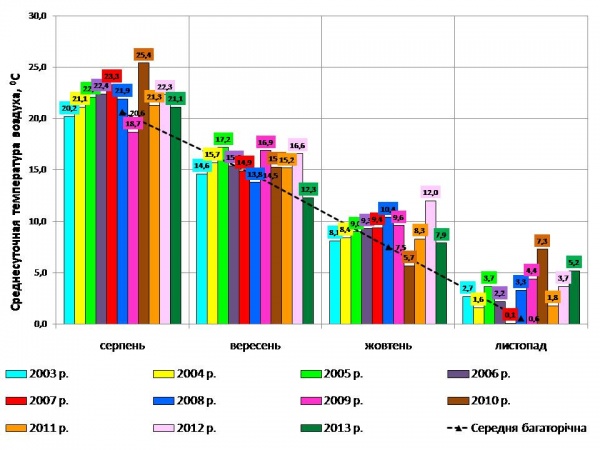
Rice. 1. Average daily air temperature for the sowing (autumn) period of 2003-2013. and the average long-term rate, 0С.
The period under study turned out to be very contrasting in terms of the amount of precipitation during the sowing period, with significant fluctuations both in the direction of their decrease and in the direction of increase in comparison with long-term data. So, in August for seven years (2003-2006, 2011-2013), the total amount of precipitation exceeded the norm by 4.1-62.0 mm, or 9-132%. August was the most humid in 2003 (93.3 mm) and in 2012 (108.9 mm). But for four years in a row (2007-2010), the amount of precipitation in August was less than the multi-year norm by 20.0-35.1 mm, or 43-75%. In September, which is the most decisive month in terms of humidity for winter grain crops, in five years (2004, 2006, 2007, 2010, 2013), out of eleven studied, the amount of precipitation exceeded the norm by 12.0-77.8 mm, or 28-179 %. In other years, the moisture deficit ranged from 9.0 mm (21%) in 2008 to 41.5 mm (95%) in 2005. In October 2003, 2005, 2007, 2009, 2010, 2012 and 2013. the amount of precipitation exceeded the norm by 9.8-74.0 mm, or by 25-189%, and the most humid month was in 2009 and 2012, when 98.8 mm and 113.2 mm fell, respectively, which is 152 % and 189% more than the norm (Fig. 2). In four years (2004, 2006, 2008, 2011) there was a moisture deficit in October. Moreover, the driest month was in 2008 and 2011, when 22.9 mm and 19.7 mm of precipitation fell, respectively, which is 42% and 50% less than the norm, respectively. In November, only for four years (2005-2007, 2009) the amount of precipitation exceeded the norm by 4.8-36.3 mm, or by 11-84%. The wettest November was in 2005 and 2006, when 79.3 mm and 58.8 mm fell, respectively, which is 36.3 mm and 15.8 mm, or 84% and 37% more than the norm. In other years of research, there was a moisture deficit in November, and this month was the driest during the last three years of research - in 2011-2013, when precipitation fell 63-93% less than normal.
So, among the months of autumn vegetation of plants, November was the most stable in terms of the total amount of precipitation in the years of cultivation - in this month, fluctuations in precipitation between the minimum and maximum values amounted to 177% (Fig. 2).

Rice. 2. The total amount of precipitation for the sowing (autumn) period of 2003-2013. and the average long-term rate, mm.
September was the least stable - with annual fluctuations in the amount of precipitation of 27.4%. In general, the total amount of precipitation for the sowing period (August-November) in nine years (2003-2007, 2009, 2010, 2012, 2013) exceeded the average long-term indicators (by 3-45%) and only in two years (in 2008 d, 2011), the amount of precipitation for the specified period was less than the norm by 38% and 42%, respectively (see Fig. 2).
According to the indicator of the hydrothermal coefficient (HC) in the autumn period (September - October), among the eleven years studied, one (2011) was acutely arid (HC 0.3), two (2005, 2008) were arid (HC, respectively, 0.9 and 0.9), two (2010, 2013) are waterlogged (GTC 2.6 and 4.6, respectively), the remaining six (2003, 2004, 2006, 2007, 2009, 2012) are moderately humidified (GTC from 1, 1 to 1.9), and therefore optimal for autumn growth and development of winter grain crops (Fig. 3).
Thus, during the study period (2003-2013), in comparison with the long-term average indicators, there was a stable annual increase in the average daily air temperature in the autumn (sowing) period and a tendency to an increase in the amount of precipitation, due to which the duration of the autumn growing season of winter grain crops increased. The time of termination of the autumn vegetation of plants by years of cultivation mainly ranged from the first (2006-2009) to the third decade of November (2003-2005 2013). In some years, winter crops continued their growing season until the first decade of December (2010, 2012), and by the end of 2011, due to a long frost-free period, there was no termination of the growing season at all, its termination occurred only in the second decade of January 2012.
Significant changes in the weather in the region in the fall contributed to certain trends beneficial for agricultural production: expanding the range of sowing, better hardening of plants, assimilation nutrients and overall better growth and development of winter crops. At the same time, weather changes contributed to a greater spread of pests in crops, which prompted a revision of approaches to integrated crop protection.

Rice. 3. Selyaninov's hydrothermal coefficient (GTK) in the autumn period (September-October), 2003-2013.
The shortage and overload of sowing equipment in the period from the first to the second decade of September (the traditional time for sowing winter crops in most regions) force agronomists and farmers to sow winter grain crops at a later date. However, the question of whether the late sowing of winter crops is justified remains open to this day. For many farmers, it is important to know whether it is worth sowing outside the optimal, recommended terms. And if it is, then under what conditions can one hope for a high yield.
The yield and quality of the harvest of wheat and other winter cereals largely depends on the observance of certain rules in the technology of growing these crops. Since the growing season for winter crops is much longer than for spring crops, it becomes necessary to pay much more attention to the implementation of proper technological operations in different periods growth and development of plants. The longest (in time) phenological phase in winter cereals is the tillering phase. In this phase, plants enter and exit winter, tillering for an average of three to six months, depending on many growing factors. Critical in the life of winter cereals is the wintering period, when the plants are exposed to the external influence of unfavorable weather conditions.
Before entering the winter, that is, at the time of the termination of the autumn vegetation, wheat plants should be well-grown (have from three to five shoots), and should also have a well-developed secondary root system... Plants during this period should be well seasoned and contain at least thirty percent carbohydrates in the tillering nodes. The content of carbohydrates in the tillering nodes can be checked in special laboratories, which are in many research institutions (crop production) in different regions.
So, one of critical factors, which determines the state of winter cereals before entering winter is the time of sowing seeds. It depends on this indicator whether the winter crops will be able to develop well and be in the proper phase of development until the end of the autumn growing season.
The results of our research have shown that the optimization of the sowing time winter wheat depended on the fertilization system. So, on average for 2012-2014. against the background without fertilizers, the best time for sowing winter wheat was the second decade of September, at which average yield varieties was 5.28 t / ha, which is respectively 0.33 t / ha and 1.32 t / ha higher than at the second (third decade of September) and third (first decade of October) sowing dates. With an organic fertilization system (manure aftereffect), winter wheat provided the highest yield when sowing in the first (second decade of September) and second periods (third decade of September) - on average, respectively, 5.60 t / ha and 5.66 t / ha, which, respectively by 1.10 t / ha and 1.16 t / ha higher compared to the third term. With organomineral fertilization systems (manure aftereffect + N30P30K30 and manure aftereffect + N90P60K60), the best time for sowing winter wheat was the third decade of September, when the yield averaged 5.98 t / ha and 6.38 t / ha, which is significant higher than when sowing in the second decade of September and the first decade of October (Table 1).
Table 1. Productivity of various types of winter wheat varieties after black fallow, depending on the sowing period and fertilization system, t / ha, 2012-2014.
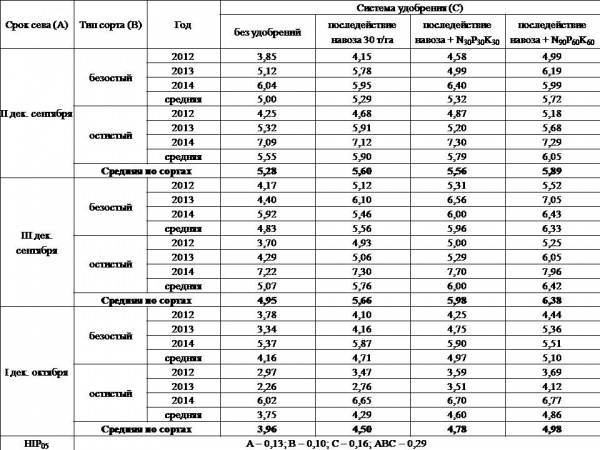
When studying the sowing dates after various predecessors against a background without fertilizers, it was found that after black fallow winter wheat varieties, the maximum yield (on average 5.28 t / ha) was formed during the first sowing period (second decade of September), and after peas for grain - in the first (second decade of September) and second (third decade of September) terms - 4.78 t / ha and 4.86 t / ha, respectively. At the second and third sowing terms after black fallow, wheat yield decreased in comparison with the first term by 0.33 t / ha and 1.32 t / ha, respectively. After peas, the wheat yield at the third sowing period decreased by 0.54 t / ha and 0.62 t / ha in comparison with the first and second sowing periods, respectively (Table 2).
Table 2. Productivity of winter wheat varieties depending on the sowing period and the predecessor, t / ha, 2012-2014. (background food - no fertilizers)

When studying the terms of sowing on different backgrounds of the main soil cultivation, it was found that against the background of moldboard cultivation, the maximum yield of the winter wheat variety was formed during the second sowing period (third decade of September), which averaged 6.65 t / ha, which, respectively, by 0.50 t / ha and 1.31 t / ha higher than in the first and third terms. And against the background of moldboard-free tillage, almost the same high yield was obtained both during the first (second decade of September) and during the second (third decade of September) sowing terms, which averaged 6.13 t / ha and 6.28 t / ha, respectively. which, respectively, is 1.44 t / ha and 1.59 t / ha higher than at the third sowing period (first decade of October) (Table 3).
Table 3. Productivity of winter wheat varieties depending on the sowing period and the background of the main tillage in the crop rotation, t / ha, 2012-2014.
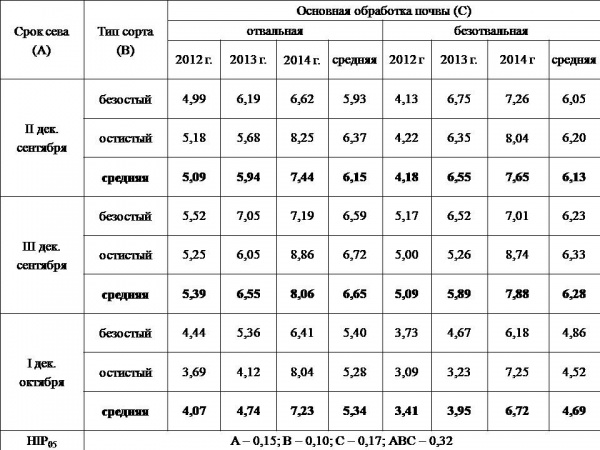
So, to the choice of sowing dates in the changing weather conditions of the present time, it is necessary to apply a comprehensive, integrated approach, taking into account other technological aspects of growing winter grain crops. The growth and development of winter wheat plants and other crops directly depends on the correctly chosen sowing period, which further affects the reproductive process and, of course, the yield.
I believe that in the current conditions, given the weather conditions, the predecessor and biological features varieties, the sowing dates of winter grain crops should be shifted towards later ones in comparison with the traditionally recommended ones.
Respectfully yours, candidate of agricultural sciences, doctoral student, leading researcher at the Institute of Plant Industry named after V. Ya. Yurieva NAAS, clergyman Sergey Avramenko.
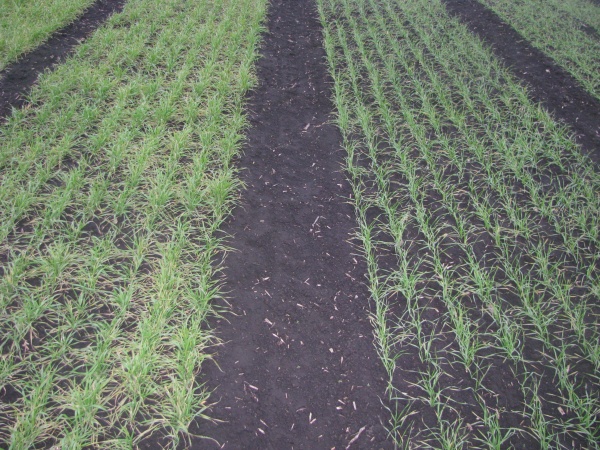
V In recent years, conditions have often developed in Ukraine when farmers lose profit when growing winter grain crops - they often have to resell them in spring, or even abandon sowing altogether. Consultations on this topic, especially this fall, have become commonplace for our agronomists, which actually prompted this publication. Also, a part of the seminar in the Zaporozhye region was devoted to this topic, which was covered in .
TO When there is enough moisture at the optimum time, there are no questions “how and when to sow”.
Sowing at the optimum time with sufficient moisture in the soil.
H what to do if the conditions are unfavorable during the sowing period? Or are the sowing conditions optimal, but the sowing deadline has already passed? We will consider these and many other questions in our publication today.
Winter wheat
Situation 1: There is no moisture in the soil, but the optimal sowing time has come.
Z Here the farmer has two solutions - to sow in dry soil or to abandon sowing altogether.
E If a decision is made to sow in dry soil, then we advise to sow at the recommended sowing depth in this region (south and center - 5 cm, north and west - 4-5 cm) and count on rain - in case of sufficient precipitation in the near time, these crops will sprout immediately and you can count on the good condition of the wheat by winter.
A why not sowafterof these precipitations? - because the result of this will be the receipt of seedlings much later and, accordingly, the loss of time for the autumn vegetation, insufficient development of the crop in the winter and, as a consequence, a poor harvest.
 Sowing in dry soil
Sowing in dry soil E If the sowing was carried out into dry soil, but the rain did not pass or did pass, but much later than the sowing date - in most cases this means a loss of seed and resources spent on sowing. Refusal to sow in such conditions will be the most economically profitable solution, then these areas will be sown with hot crops in spring.
R The decision is yours, dear leaders and agronomists!
Situation 2: The sowing time has come, precipitation has fallen, but the moisture in the soil is at a depth of 1-4 cm.
NS Under such conditions, sowing in wet soil is a risk of getting a seed sprout, which will then die. NS When sowing, the soil looses and dries up - the moisture partially evaporates and it is not enough for the development of seedlings. In order to prevent this from happening, sowing must be carried out to a depth of 1 cm below the "provocative" moisture - that is, by 5 cm. Then there will be such a development scenario as described above in a situation where the grain will be sown in dry soil.
Situation 3 : Optimal conditions were formed (precipitation was 15-25 mm and there was enough moisture in the soil), but the recommended sowing time was over
V In such conditions, we recommend extending the sowing time by 5 days. In the case of a long and warm autumn, such crops will hibernate in good condition - in the tillering phase with a well-developed root system. In the event of the onset of early cold weather, the culture will still have time to form crops at the stage of 3 leaves - the beginning of tillering. Such a state for overwintering is worse, but it allows us to hope for a decent harvest.
 Good condition of wheat before wintering
Good condition of wheat before wintering NS ri optimal conditions sowing, it is worth mentioning such an agricultural technique as rolling. When there is enough moisture and it is deeper than the sown grain, rolling helps to draw moisture to the grain from the lower layers of the soil and ensures better germination of the crop.
How much to sow?
H sowing patterns largely depend on the predecessor, weather conditions and sowing time. Let's give illustrative examples with numbers: if the crop has a good predecessor (peas, rapeseed, mustard), good weather conditions have developed at the optimum sowing time, then the seeding rate can be 4-4.5 million / ha. In this case, we will get seedlings that will form with the subsequent favorable development of 2-3 productive stems - and this provides the preconditions for a high yield.
H o often we have imperfect conditions and sowing terms, a bad predecessor (sunflower, corn for grain, soybeans) - this means that it is not worth hoping for the formation of more than one productive stem and then the sowing rate should be increased by 20-30 percent - up to 5 5.5 million / ha.
T So, under ideal conditions and early sowing, we can sow at a lower rate, but such conditions do not always develop. By increasing the seeding rate, we expect less tillering, but in this way we increase the number of productive stems.
Winter Barley
D To get a good harvest of winter wheat, a prerequisite is winteringexpandedculture. For winter barley, such a condition is not required. Since barley can quickly "start" (form tillering and a secondary root system) even in the spring, tillering in the fall is not at all necessary for winter barley. That is, the sowing time of winter barley can be 5-7 days later than winter wheat. Regardless of whether it overwinters in the seedling stage or in full-grown - winter barley can give good harvest... Based on this, the requirements for the timing of sowing winter barley are not so strict.
V continuation of this topic, we offer youfragment of the video of our seminar in Southern Ukraine, which took place on the basis of the farm "Molodezhnoe", which has been working on Know-Till for 5 years already. At this seminar, questions were raised on the timing of sowing winter crops, seeding rates, approaches to the timing of sowing in the Know-till technology, the peculiarities of the development of winter wheat and winter barley in the autumn and spring periods.
Winter crops cultivation technology. Place in the crop rotation. Tillage and fertilization.
Unlike other cereals, winter crops are most responsive to their predecessors. Their yield upon repeated sowing within 2-3 years, even with a high level of agricultural technology, is significantly reduced. One of the best predecessors for winter crops, especially for winter wheat, is pure fallow. Winter crops with pure fallow develop better in autumn, overwinter well and give higher yields than other predecessors. In the zone of sufficient moisture, occupied fallows are a valuable precursor for winter crops. The best steaming crops are corn for green fodder, early potatoes, early ripening peas, vetch-oat and vetch-rye mixtures, perennial herbs for green fodder and hay, lupine and other green manure.
Sunflower, corn, castor oil, winter barley, winter wheat, winter rye, and spring barley can be used as non-steam predecessors.
The system of soil cultivation for winter crops is determined by the characteristics of the predecessor, the weediness of the fields and the natural and climatic conditions of the farm.
Winter crops are responsive to plowing depth. The deepening of the arable layer is best carried out with autumn tillage of the soil under the predecessor with the introduction of increased doses of organic fertilizers. high yields winter crops for busy pairs and non-fallen predecessors, a high level of agricultural technology and timely harvesting of the previous crop are required.
In the steppe regions North Caucasus, The Volga region, where the manifestation of water and wind erosion is possible, use an anti-erosion system of soil cultivation.
make high demands on soil fertility and are very responsive to fertilizers. For the formation of 100 kg of grain and the corresponding amount of straw, they consume 2.5-4 kg of nitrogen, 0.9-1.5 kg of phosphorus and 1.6-3 kg of potassium.
On chernozem soils of the central and southern regions, 15-20 tons of manure, 30-60 kg of phosphorus and 30-45 kg of potassium per hectare are provided as the main fertilizer. Fertilizers are applied for the main plowing (black fallow - in autumn, early fallow - in spring) or in the first half of summer during the treatment of steam. In arid regions, for the main plowing in the fall, they use organic fertilizers... On the soils of the Non-Chernozem zone, they give 30-40 tons of manure, 45-60 kg of phosphorus, 30-50 kg of potassium per hectare.
In early spring, winter crops are fed. At spring feeding make 30-45 kg of nitrogen and 15-20 kg of phosphorus and potassium per 1 ha.
After harvesting steam-bearing crops for deep plowing, and with surface tillage, 35-50 kg of phosphorus, 30-45 kg of potassium and 20-30 kg of nitrogen (with a lack of it in the soil) are introduced per hectare. In the rows and for autumn dressing, fertilizers are applied in the same way as when sowing with pure fallow.
On sandy, clayey and podzolic soils of the Non-Chernozem zone nice results gives green fertilizer - lupine and other green manure, which are plowed in green manure fallow.
Lime is applied for deep plowing - 4-6 t / ha, depending on the acidity of the soil. This amount of lime is valid for 7-10 years. Small doses are applied for peeling, that is, they are closed up smaller.
Sowing. For sowing, it is necessary to use large, leveled seeds of zoned varieties that correspond to the first and second classes of the sowing standard. As a rule, the seeds should be from the previous year's harvest (from the rolling stock.
Seed preparation. Before sowing, the seeds are ventilated and heated in the sun for 3-5 days. Pre-sowing heating of freshly harvested seeds is especially important. To fight diseases, seeds are treated with foundation, vitavax (2.5 kg / t), baytan or pentatiuram and other preparations.
Sowing dates. Timely sowing of winter crops in moist soil ensures the emergence of friendly shoots, powerful development of the root system, normal tillering and good autumn hardening of plants. The most favorable for winter crops are the average sowing dates in relation to the conditions of each region.
The sowing time must be specified taking into account the characteristics of the sown crop and variety, weather conditions, soil moisture, the quality of its processing, the nature of predecessors and local experience on the farm. Winter grain is sown in the usual row method with row spacing of 15 cm. Narrow-row sowing with 7.5 cm row spacing is being used more and more.
Seeding rates. When establishing seeding rates, climatic features, the quality of the seed and the sown variety, the properties of the soil, the timing and methods of sowing, etc. are taken into account. Central Asia with irrigation of 3-3.5 million seeds, or 130-150 kg, on dry land 2-2.5 million, or 80-100 kg of germinating seeds per hectare.
The normal sowing depth for winter wheat is 5-6 cm, for winter rye and winter barley is 4-5 cm. On light soils and in arid conditions, the sowing depth is increased, and on heavy and wet ones, it is reduced. Small seeds are planted smaller than large ones.
Crop care. rolling, feeding, snow retention, spring harrowing, combating lodging, weeds, diseases and pests, watering, artificial additional pollination of winter rye. Post-sowing packing with ring-spur rollers contributes to a quick and friendly emergence of shoots.
In a rainy autumn, a lot of water can accumulate in low areas of the relief, which is diverted through special grooves.
In arid conditions and in areas where there is little snow, snow retention is carried out, which increases the yield of winter crops by 0.3-0.6 t / ha.
The most important measure for caring for winter crops is early spring harrowing. Weed control is carried out before hatching cultivated plants... The most effective use of chemical herbicides.
Harvest. With the separate method, the plants are cut at a height of 15-20 cm and placed on the stubble in the windrows. As the rolls dry up, the combine picks them up and threshes them. With this method, grain losses and labor costs for threshing are reduced. Separate harvesting begins in the phase of waxy ripeness. When fully ripe, especially in prolonged rainy weather, as well as thinned and undersized bread is harvested by direct combining. With this method, the harvester cuts, picks up and immediately threshes the harvested crop.
When fully ripe, especially in prolonged rainy weather, as well as thinned and undersized bread is harvested by direct combining. With this method, the harvester cuts, picks up and immediately threshes the harvested crop.